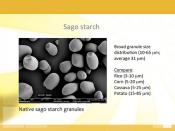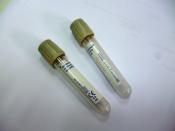Supplying energy for normal bodily functions and levels of physical activity is the main purpose of carbohydrates. Four calories of energy is supplied by a gram of carbohydrates. Carbohydrates supply the body with energy so that proteins don't. When carbohydrates are combined with protein various compounds in the body form.
Starches and sugars are the major carbohydrates. Starches and sugars are represented by a variety of foods such as honey, flour, beet, fruit sugar, rice, and potatoes. Carbohydrate intake should supply over half a persons daily calories. If that doesn't happen the liver convert fatty and amino acids into carbohydrates for energy. All carbohydrates must be converted into glucose before it can be used as energy.
Starches are called complex carbohydrates. They have a lot of glucose units. The units must be broken apart in the process of digestion. Starches consist of two kinds of molecules, amylose and amylopectin.
Amylose is made of glucose units that join to form linear chains. Short chains of glucose units that form branches consist in amylopectin. Amylose is 16 to 20% of all starches and the rest are amylopectin.
An enzyme called salivary or ptyalin begins to digest starches in the mouth. Dextrin and shorter chain sugars are hydrolyzes cooked starches. Raw starches can't be digested such as macaroni. Because food doesn't stay in the mouth long enough for complete digestion salivary breaks it down in the stomach. About 50% is broken down in the stomach. Starch digest halts when mixed with stomach acids.
Liquefied foods (chyme) enter the duodenum and the digestion of starches continues. Secreted enzymes from the pancreas break down unbranched starches into a maltose. (a disaccharide, a two unit sugar) This enzyme is called pancreatic amylase. Branched starches are broken down into dextrin. Then it...



Enzymes
The essay was okay. The text gives no explanations to the terms(monosaccharide,disaccharide,etc.) These terms aren't common knowledge outside of science. There was no conclusion to sum up all the information.
2 out of 2 people found this comment useful.